Release the parking brake
Dr. Stuart Grant, Principal Consultant at Archetype Medtech explores how taking a dominant design approach can prevent innovation from stalling.
We know innovation is the lifeblood of the MedTech industry, but it's also a winding road riddled with complexities. Success hinges on keeping your "north star" in sight while simultaneously tackling the tricky terrain.
But here's the surprising truth: a significant chunk of the journey is the same, regardless of your specific device. While the risk and benefit profile of each device class dictates the depth and breadth of work required, the core activities remain remarkably consistent.
The Dominant Design of Innovation
Think of it like the automotive industry. Despite the dazzling array of models and features, a car still fundamentally has four wheels, seats, and a steering wheel. This "dominant design" emerged from decades of iteration, balancing performance, usability, and cost.
The same principle applies to MedTech innovation. There's a "dominant design" to the process itself – a proven framework for bringing medical devices to market. To expedite innovation, startups should embrace this framework, not try to reinvent it. Your goal isn't to revolutionise the process of innovation, but to develop your groundbreaking product effectively and efficiently.
Don't Get Bogged Down in the Details
Roughly 80% of a startup's activities are agnostic to the device itself. Risk management, requirement management, biological evaluations, usability engineering, verification and validation, labelling – these are universal necessities.
So, free yourself from the minutiae! Find someone who knows this "dominant design" inside and out. An experienced guide can help you identify the standard activities versus the device-specific ones, saving you precious time and resources.
A word of caution: QA/RA experts are invaluable, but they often focus on their dominant design – quality and regulatory compliance. While essential, this is only one piece of the puzzle. Seek out those with a broader understanding of the entire innovation process.
And be wary of the "it depends" crowd. While nuance exists, the core principles of MedTech innovation remain remarkably consistent.
Release the Parking Brake
By leveraging the "dominant design" of MedTech innovation, you can effectively release the parking brake and accelerate your journey to market. Focus on what truly matters – your unique solution to the problem and its potential to transform patient lives.
Indecision, like hitting the brakes, can significantly hinder your progress. Whereas making a decision, whether it's to veer left, right, or even scrap a prototype, provides valuable learning experiences.
Remember, even seemingly small delays can accumulate and have a considerable impact on your timeline. A few extra weeks added to numerous activities can quickly snowball into months, potentially jeopardising your launch and ultimately, your success.
Keep moving forward
Don't let unnecessary delays stifle your team's innovative spirit. Remember the Pareto Principle or 80/20 rule – if you have enough information, make the call and move on. Provide dedicated time for decision-making, perhaps even adopting the Jeff Bezos method of within-meeting reading and concluding the meeting only when a decision is reached.
As a leader, it's your responsibility to identify and address roadblocks. If a team member is struggling, decide whether to slow down, provide support, or forge ahead. And again, maybe take a page from Bezos' playbook: shift the burden of justification to the naysayers. Let them justify why can’t it be done.
Ultimately, it's about fostering a culture that encourages calculated risk-taking and swift decision-making. So, release the parking brake, embrace the challenge, and get your innovation into the hands of the user and patient.



